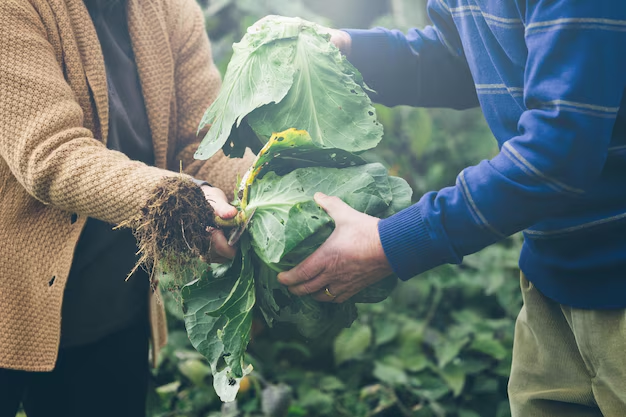Expanding Opportunities: A Comprehensive Guide to Outreach and Assistance for Socially Disadvantaged and Veteran Farmers and Ranchers
Agriculture has long been the backbone of society, providing the food and resources necessary to sustain human life. However, not all farmers and ranchers have the same opportunities or access to resources. Socially disadvantaged and veteran farmers often face unique challenges, from limited access to land and capital to insufficient outreach and support networks. This article explores the various assistance programs available to help these vital but underserved groups thrive in the agricultural landscape.
🌟 Understanding the Need for Assistance
The agricultural sector is both essential and unpredictable. Factors such as fluctuating market prices, climate changes, and natural disasters can profoundly impact farmers' livelihoods. For socially disadvantaged groups, including those who face racial, ethnic, or economic barriers, these challenges can be exacerbated. Similarly, veterans transitioning to civilian life may face difficulties finding funding, resources, or support networks in the agricultural sector.
Key Challenges:
- Access to Land and Capital: Many disadvantaged farmers have historically struggled to secure necessary resources.
- Knowledge and Training Deficits: Lack of access to education and training can hinder progress.
- Market Access: Limited opportunities to sell goods at competitive prices.
- Support Networks: Isolation from communities offering mutual support and learning opportunities.
Understanding these challenges highlights the critical need for targeted assistance programs.
🌾 Government Support and Policies
H2: U.S. Department of Agriculture (USDA) Initiatives
The USDA offers various programs to support disadvantaged and veteran farmers, aiming to level the agricultural playing field. These initiatives include financial aid, education, and training.
H3: Farm Service Agency (FSA) Loans
The FSA provides direct and guaranteed loans to help farmers start, build, and maintain family farms. These loans are vital for securing land, equipment, and livestock.
Types of Loans:
- Direct Farm Ownership Loans: For farmers to buy or enlarge their operations.
- Direct Operating Loans: To purchase equipment or cover operating costs.
- Guaranteed Loans: Issued by local lenders but guaranteed by the FSA to make them accessible for high-risk borrowers.
H3: Outreach and Assistance Program for Socially Disadvantaged and Veteran Farmers and Ranchers (2501 Program)
The 2501 Program focuses specifically on outreach and technical assistance, aiming to enhance participation among disadvantaged groups in USDA programs.
Program Goals:
- Information Sharing: Ensures farmers are aware of the programs and services available.
- Technical Assistance: Offers guidance on applying for grants and loans successfully.
- Capacity Building: Provides tools for sustainable farm management and enterprise.
H2: State and Local Resources
Many states offer unique programs designed to support these farmers, each tailored to regional needs. These may include state-funded grants, localized training programs, and marketing assistance to help farmers reach new customers.
✅ Practical Steps to Access Support
Successfully navigating assistance programs can be challenging. Here are practical steps farmers can take to access support effectively:
- Identify Qualifying Programs: Research the available assistance programs that meet your specific needs and qualifications.
- Prepare Necessary Documentation: Gather farm records, financial statements, and personal identification documents.
- Seek Guidance: Utilize technical assistance from the USDA or related organizations for application processes.
- Utilize Networking Opportunities: Engage with local agricultural extension services or farmer organizations.
🌎 Building a Community of Support
H2: Networks and Organizations
Joining networks and organizations can provide valuable support and resources. These groups offer a sense of community and shared knowledge, particularly important for socially disadvantaged and veteran farmers.
H3: Farmer Veteran Coalition
This organization focuses on helping veterans pursue careers in agriculture by providing education, grants, and a strong community. They help veterans translate military skills to farm management.
H3: National Sustainable Agriculture Coalition (NSAC)
NSAC advocates for policies supporting family farmers' interests, including those socially disadvantaged. They offer resources for policy understanding and advocacy.
H2: Educational and Training Opportunities
Education is key to overcoming barriers, offering both hard skills like modern farming techniques and soft skills such as business management.
H3: Cooperative Extension Services
Most states provide extension services with courses, workshops, and one-on-one mentoring focused on practical skills and innovative farming methods.
📋 Summary of Key Takeaways
Here's a quick summary of the essential steps and resources available for socially disadvantaged and veteran farmers to improve their agricultural ventures:
🎯 Programs to Consider:
- USDA FSA Loans
- 2501 Program
- State-level grants and assistance
🛠️ Steps to Success:
- Research programs and prepare documents
- Seek guidance and technical assistance
- Join supportive networks like Farmer Veteran Coalition
🌱 Education & Training:
- Utilize Cooperative Extension Services
- Engage in specialized workshops
By leveraging these resources, farmers and ranchers can make informed decisions about expanding their operations and securing a more stable future.
The Path Ahead: Embracing Sustainable Growth
Empowering socially disadvantaged and veteran farmers is critical both for the economy and for fostering diversity within the agricultural sector. Through the existing frameworks of support and community, these farmers not only sustain their livelihoods but also contribute richly to innovation and sustainability in agriculture.
Ensuring equitable access to resources, knowledge, and networks lays the foundation for a thriving agricultural sector that embraces diversity and inclusivity. As these farmers take advantage of available programs, they help craft a future where all agricultural stakeholders can reap the rewards of their labor, creating a more bountiful, resilient food system for everyone.

Related Topics
- A Comprehensive Guide To Crime Victim Assistance
- A Comprehensive Guide To Economic Infrastructure Development
- A Comprehensive Guide To Low-Income Housing Repair Loans And Grants
- A Comprehensive Guide To The Emergency Solutions Grants Program
- A Comprehensive Guide To The Senior Companion Program
- A Comprehensive Guide To The State Childrens Health Insurance Program
- A Comprehensive Guide To The TANF Program For Needy Families
- Additional Child Tax Credit
- Adoption Assistance
- Adult Basic Education Grants